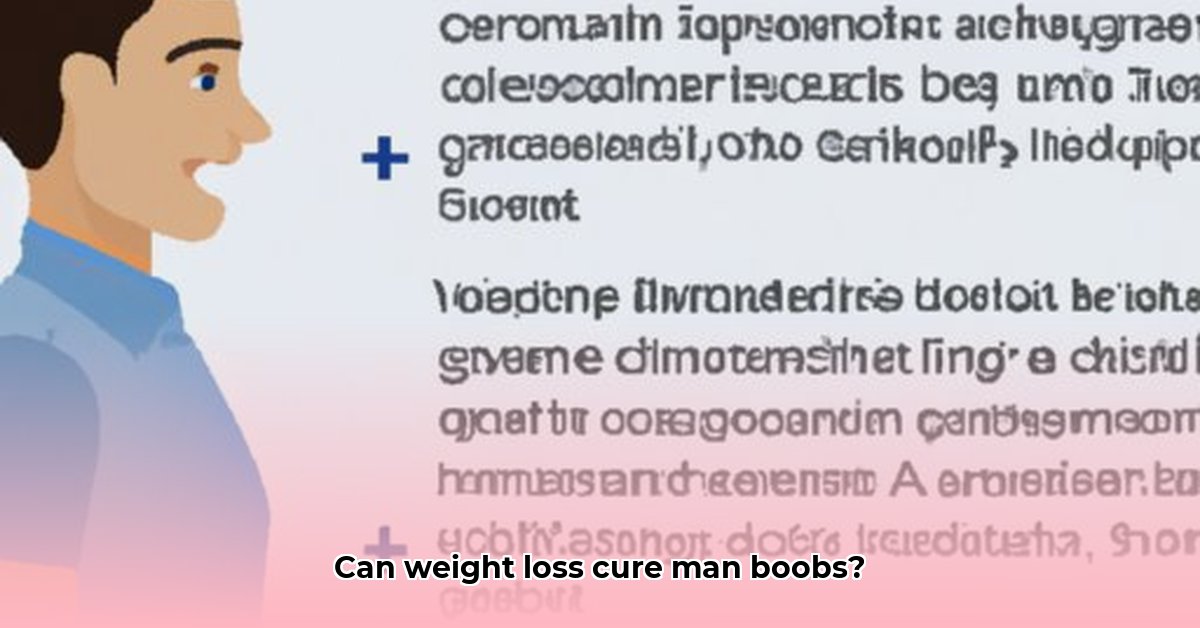
Ever noticed extra fullness in your chest area? Many men experience this, and it's often one of two things: excess fat (pseudogynecomastia) or a condition called gynecomastia. This article clarifies the difference, explains the causes, and guides you through treatment options, from lifestyle changes to medical interventions. We'll empower you to make informed decisions about your health.
Understanding Gynecomastia vs. Pseudogynecomastia
The key to knowing if weight loss will help lies in understanding the difference between gynecomastia and pseudogynecomastia. Pseudogynecomastia is simply excess fat around the chest. Gynecomastia, however, involves the growth of glandular breast tissue – actual breast tissue itself. This distinction is critical because only pseudogynecomastia responds directly to weight loss. Gynecomastia requires a different approach.
What Causes Gynecomastia and Pseudogynecomastia?
Several factors contribute to enlarged breast tissue in men. Hormonal imbalances, affecting the testosterone and estrogen ratio, are a primary cause of gynecomastia. Medications, underlying medical conditions (such as liver or kidney disease), and even marijuana use can also play a role. Pseudogynecomastia, on the other hand, is almost always related to weight gain and increased body fat percentage. Isn't it interesting how similar symptoms can have such different root causes?
The Role of Weight Loss
This is where the distinction is crucial. If you have pseudogynecomastia (excess fat), losing weight can reduce or eliminate the breast enlargement. However, weight loss alone is ineffective for true gynecomastia. Why? Because gynecomastia is due to increased glandular tissue growth, not just fat. Weight loss reduces overall fat, but the glandular tissue persists. Think of it like this: pseudogynecomastia is a fat layer; gynecomastia is a growth beneath that layer.
[Here you would insert a simple illustration comparing fat tissue and glandular tissue.]
Treatment Options: A Personalized Approach
Treatment depends entirely on the diagnosis. For pseudogynecomastia, lifestyle modifications are often sufficient. Gynecomastia, however, requires a more nuanced approach.
Pseudogynecomastia Treatment
- Lifestyle Modifications: A balanced diet and regular exercise are crucial for reducing overall body fat. A consistent fitness routine, combined with a healthy diet, can significantly impact your body composition, improving the appearance of your chest. This is often the first line of treatment for pseudogynecomastia.
Gynecomastia Treatment Options
- Watchful Waiting: Mild cases may resolve on their own, particularly in adolescents experiencing puberty-related hormonal fluctuations. However, regular monitoring is essential.
- Medication (Hormone Therapy): This may be used to address underlying hormonal imbalances. Important Note: Hormone therapy has potential side effects and requires strict medical supervision. It's not a quick fix and individual responses can vary.
- Surgery (Gynecomastia Surgery): For severe cases unresponsive to other treatments, surgery to remove the excess glandular tissue and fat is a possible option.
Pros and Cons of Treatment Options
Here's a summary of the advantages and disadvantages of each approach:
| Treatment Option | Pros | Cons |
|---|---|---|
| Lifestyle Modification (Pseudogynecomastia) | Non-invasive; improves overall health; cost-effective. | Requires commitment; may not work for everyone; slow process. |
| Hormone Therapy (Gynecomastia) | Can address hormonal imbalances; potential for improvement. | Side effects possible; requires medical supervision; not always effective. |
| Surgery (Gynecomastia) | Effective for significant cases; permanent results. | Invasive; carries surgical risks; relatively costly; recovery time. |
When and How to Seek Medical Help
If you're concerned about breast enlargement, consult your doctor. They can diagnose the condition and recommend appropriate treatment. A physical exam (possibly including a "pinch test") and blood tests to check hormone levels may be part of the process.
Steps to Take:
- Schedule an Appointment: Contact your primary care physician or an endocrinologist.
- Thorough Explanation: Clearly describe your symptoms and concerns.
- Physical Exam & Testing: Undergo any recommended physical examinations and laboratory tests.
- Diagnosis & Discussion: Receive your diagnosis and discuss your options with your doctor.
- Personalized Treatment Plan: Develop a plan tailored to your individual needs and circumstances.
- Follow-up Care: Attend regular check-ups to monitor progress and address any concerns.
Remember, your doctor is your best resource. Open communication and adherence to a treatment plan will lead to the best outcome. While the question of weight loss and gynecomastia is important, a comprehensive approach with medical guidance ensures the safest and most effective resolution.